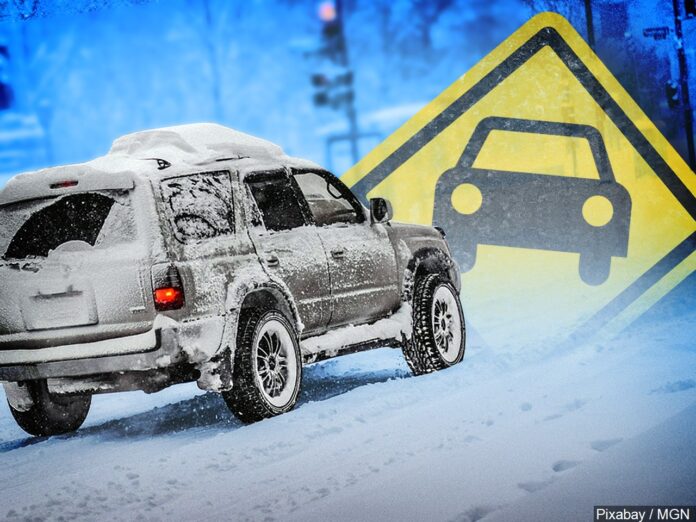FAYETTEVILLE, Ark. (KNWA/KFTA) — As potential winter weather approaches on Thursday, Dec. 22, the American Automobile Association is providing those traveling in winter conditions such as ice and snow ways to stay safe.
Drivers are advised to stay off the roads during winter weather unless absolutely necessary, but if you do have to get out, AAA says to stay tuned to weather forecasts and additionally, let others know your intended route, destination, and time of arrival.
AAA: Have vehicle emergency kit before winter blast
Here are some tips for preparing your vehicle for driving in bad weather:
- Clear all snow and ice from the vehicle’s windows, roof, hood, trunk lid and any other covered areas. This will reduce risk, because it increases your visibility. Additionally, drivers around you won’t be blinded by snow blowing off your vehicle.
- Use an ice scraper to remove snow and ice from your windshield and all windows, including side and rear windows. This will improve your ability to see other roadway users that may move into your path of travel.
- To optimize visual clarity, clean the outside and inside of your windshield at least once a week. Frequent cleaning is even more important if you smoke.
- Keep your car’s windshield and rear-window defrosters in good working condition.
- Keep your windshield wiper blades fresh. Many drivers change them every six months, especially before driving in bad weather.
When on the road:
- Make sure your headlights are on. In fact, it is a good idea to turn on your headlights any time you drive, because you will increase your visibility in any conditions.
- Reduce your speed and leave plenty of room to stop. You should allow at least three times more space than usual between you and the vehicle in front of you.
- Brake gently to avoid skidding.
- Do not use cruise control on any wet, snow-covered or icy roads.
- Be aware of possible icy roads. Be especially careful on bridges and overpasses, which freeze sooner than roads. And even at temperatures above freezing, if conditions are wet, you might encounter ice in shady areas or on exposed roadways like bridges.
- Be careful on infrequently traveled roads, which may not be cleared as often as other roads.
When leaving the roadway:
- If you must pull off the road, wait for conditions to improve and pull off the road as far as you can, preferably past the end of a guardrail.
- It is best to pull into a rest area or parking lot, rather than on the road’s shoulder.
Know when to brake and when to steer:
- Some driving situations require abrupt action to avoid a crash or collision and in winter conditions the decision to steer or brake can have very different outcomes. When traveling more than 25 mph, AAA Missouri recommends steering over braking to avoid a collision in winter-like conditions, as less distance is required to steer around an object than to brake to a stop. In slick conditions, sudden braking can lead to loss of vehicle control.
- However, sometimes steering is not an option. Braking on slippery surfaces requires you to look further ahead and increase following and stopping distances. Plan stopping distances as early as possible and always look 20-30 seconds ahead of your vehicle to ensure you have time and space to stop safely.
Stay in control through a skid:
- Even careful and experienced drivers can skid on slippery surfaces. When a vehicle begins to skid, it’s important not to panic and follow these basic steps:
- Continue to look and steer in the direction you want the car to go.
- Avoid slamming on the brakes as this will further upset the vehicle’s balance and make it harder to control.
Visit KNWA/FOX24’s weather page to keep up with all the latest winter weather coverage.










